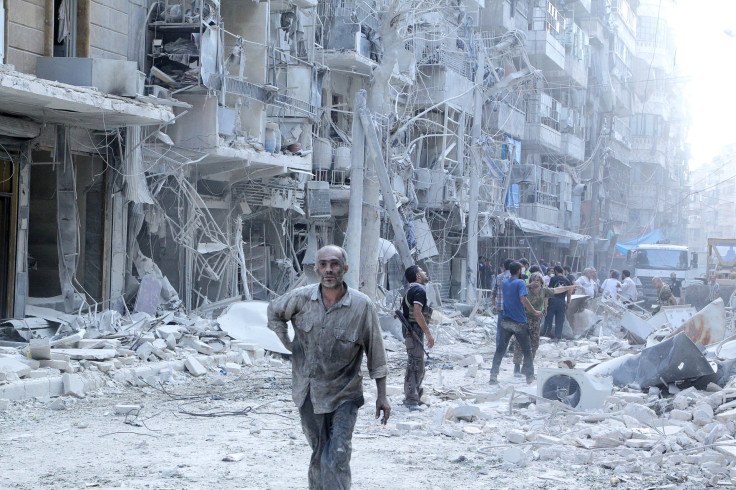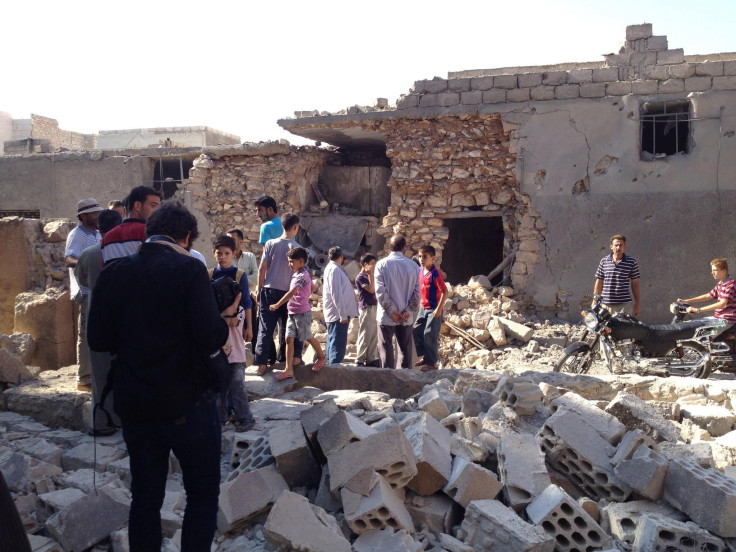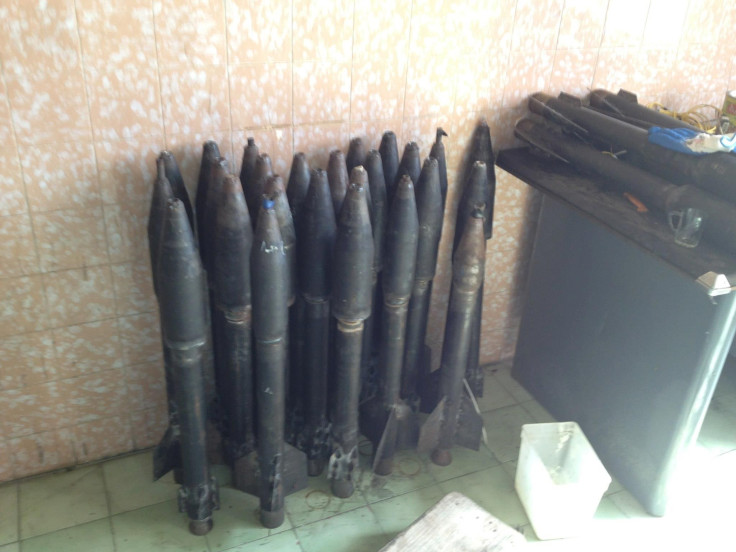Five Years After Syrian Uprising Began, Aleppo Counts The Cost Of War

On a warm, quiet night in August 2012, the rubble from mosques, shops and houses swirled with each gust of wind that swept down the main road leading from Turkey to Aleppo, Syria. The tan cement houses had been blown out from a battle between rebels and the regime just hours earlier. As the sun set, the dark shadows of crumbled buildings showed how empty the town had become.
There was no one in sight except a few rebels who’d stayed behind to track cars coming through from Turkey. Sitting on white plastic chairs, smoking cigarettes, they greeted me with high-fives. “Welcome to Las Vegas, the best place in the world,” one of them joked.
The uprising had begun only a little more than a year earlier, in March 2011. Street protests quickly escalated to a full-blown civil war. And in the summer of 2012, Syria was just beginning to experience the effects of the newly formed violent extremist groups. Five years after peaceful protesters in Dara’a were met with rubber bullets, Syria has become what one activist described to International Business Times as a “hole of darkness.”
After that night in 2012, Syria fell into chaos. Hundreds of thousands of people have been killed, yet President Bashar Assad remains in power. His barrel bombs, along with Russia’s aircraft, have created one of the worst humanitarian disasters in modern history, forcing millions of people to flee to refugee camps in countries nearby. Still, neither the United Nations nor world powers have been able to slow the intensity of the crisis. Now, more than 5 million people are in need of permanent housing, tens of thousands need medical services to treat injuries caused by the war, and Syria’s youth population does not have consistent schooling. Local services like garbage pickup are active in some communities and nonexistent in others. Water and food in many parts of Syria are luxuries.

The majority of Syria’s activists have either been forced out of the country, arrested or killed. The rest have sought refuge in silence.
One of them told IBT in a WhatsApp message: “I don’t even recognize this Syria. There are so many foreign fighters here that it looks like different people to me,” he said. He asked to remain anonymous for fear of being arrested for talking to the press. Indeed, there are thousands of foreign fighters in Syria from countries spanning the globe — from France to China — who’ve come in to fight for the Islamic State group and Jabat al-Nusra, the extremist rebels.
The point of no return for Syria: the battle for Aleppo in the summer of 2012. Syria’s largest city was under attack by Assad’s forces, and local rebels, many of whom had defected from Assad’s military, were desperate to hold the strategic city. They wanted to maintain their access to Turkey.
In Al-Bab, a northern suburb of Aleppo, rebel fighters lived in communal homes, some of which had been abandoned by their neighbors. They slept on mattresses and boiled water for tea. After morning prayers, they jumped into their white Ford pickup trucks and drove into downtown Salaheddin, the center of Aleppo. They fought with what little they had — AK-47s and small pistols. Salaheddin turned into one of the bloodiest battles of the war, with more than 2,000 people killed in the first few months of fighting. It is the area perhaps hardest hit by Russian and Syrian bombs.
The local cemetery has filled too quickly for headstones to be placed; instead, there are rocky makeshift burial mounds. Family members, when they come to pray, must remember which grave is which.
The rebels were, and still are in many regions, relying on sporadic shipments of weapons from Turkey. While some groups have received more advanced weaponry from Gulf states, other smaller, rag-tag batallions in rural communities are still manufacturing their ammunition by hand.

Those who have stayed in Syria — the shop owners, schoolteachers, barbers and doctors — are aware of the risks.
“We as doctors know that [death] is a possibility,” said Dr. Abdullah Sutuf, a doctor in northern Syria. “Every day we go to the hospital and see the helicopters overhead, knowing they might attack us. Working conditions are next to impossible, but it is [equally] impossible not to do all we can to help our people.”
“We have already seen the worst there is,” he says. “Why would we leave now?”
A ceasefire has technically been in place since the end of February, though Russia continued to bomb civilians in support of Assad’s regime. Now, Syrians may have a real chance to rebuild their homes, stores and hospitals. On Monday night, Russian President Vladimir Putin announced that he had ordered the withdrawal of his troops from the country, signaling to civilians that the nation may finally reach a new state of calm.
The decision by Russia to scale back its military involvement in Syria comes as the United Nations envoy to the Syrian conflict, Staffan de Mistura, resumes his efforts to broker a peace deal between Assad’s forces and rebel groups. This is not the first time the U.N. has tried to reach a deal between the warring parties, but the talks failed and violence increased.

So far, the opposition groups in Syria have not agreed to talks, claiming that Russia was killing their people and supporting a dictator responsible for the deaths of hundreds of thousands of civilians. The Russian pullback could soften the opposition’s position.
Despite the uncertainty, Sutuf says he finds himself thinking about what life was like before the war.
“There are moments when I thank God that I am still alive, that I am still able to do what I do,” the doctor said. “Syria is still beautiful to me.”
© Copyright IBTimes 2024. All rights reserved.











